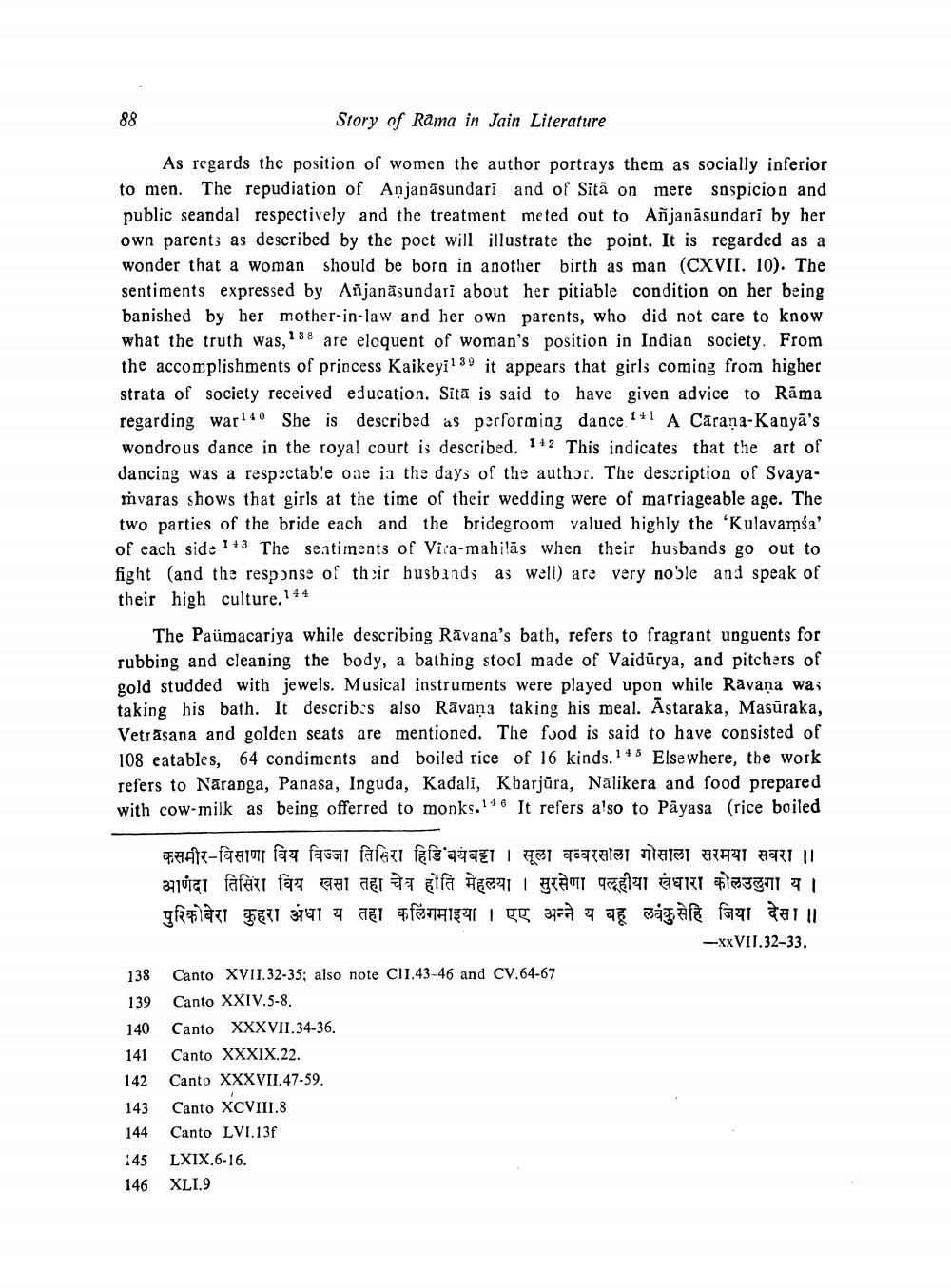________________
OO
co
Story of Rama in Jain Literature
As regards the position of women the author portrays them as socially inferior to men. The repudiation of Anjanāsundari and of Sitä on mere snspicion and public seandal respectively and the treatment meted out to Añjanāsundari by her own parents as described by the poet will illustrate the point. It is regarded as a wonder that a woman should be born in another birth as man (CXVII. 10). The sentiments expressed by Añjanāsundari about her pitiable condition on her being banished by her mother-in-law and her own parents, who did not care to know what the truth was,138 are eloquent of woman's position in Indian society. From the accomplishments of princess Kaikeyil 39 it appears that girls coming from higher strata of society received education. Sita is said to have given advice to Rāma regarding war140 She is described as performing dance. 141 A Carana-Kanyā's wondrous dance in the royal court is described. 1+2 This indicates that the art of dancing was a respectable one is the days of the author. The description of Svayamvaras shows that girls at the time of their wedding were of marriageable age. The two parties of the bride each and the bridegroom valued highly the 'Kulavamsa' of each side 1 +3 The seatiments of Vira-mahilās when their husbands go out to fight (and the response of their husbands as well) are very noble and speak of their high culture. 1 4 4
The Paümacariya while describing Rāvana's bath, refers to fragrant unguents for rubbing and cleaning the body, a bathing stool made of Vaidurya, and pitchers of gold studded with jewels. Musical instruments were played upon while Rāvana waz taking his bath. It describ:s also Rāvana taking his meal. Astaraka, Masūraka, Vetrasana and golden seats are mentioned. The food is said to have consisted of 108 eatables, 64 condiments and boiled rice of 16 kinds.1 4 Elsewhere, the work refers to Näranga, Panasa, Inguda, Kadali, Kbarjūra, Nalikera and food prepared with cow-milk as being offerred to monks. 146 It refers also to Payasa (rice boiled
कसमीर-विसाणा विय विज्जा तिसरा हिडिवयंबट्टा । सूला वव्वरसाला गोसाला सरमया सवरा ।।
आणंदा तिसिरा विय खसा तहा चेव होति मेहलया । सुरसेणा पलूहीया खंधारा कोलउलुगा य । पुरिकोबेरा कुहरा अंधा य तहा कलिंगमाइया । एए अन्ने य बहू लवंकुसेहि जिया देस। ॥
---XXVII.32-33. 138 Canto XVII.32-35; also note CI1.43-46 and CV.64-67 139 Canto XXIV.5-8. 140 Canto XXXVII. 34-36. 141 Canto XXXIX.22. 142 Canto XXXVII.47-59. 143 Canto XCVIII.8 144 Canto LVI.13f 145 LXIX.6-16. 146 XLI.9




